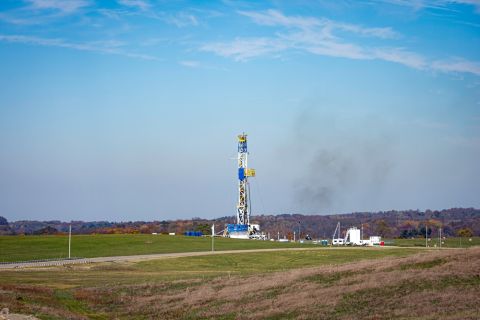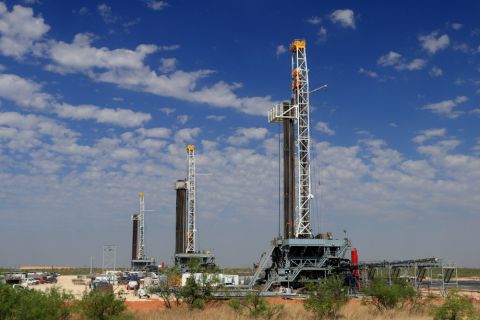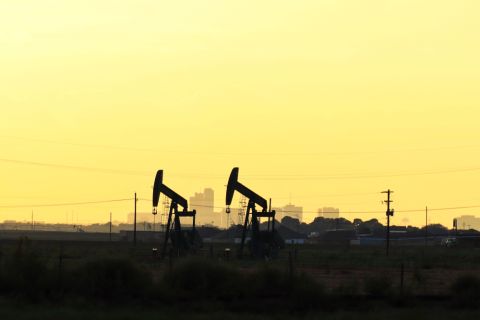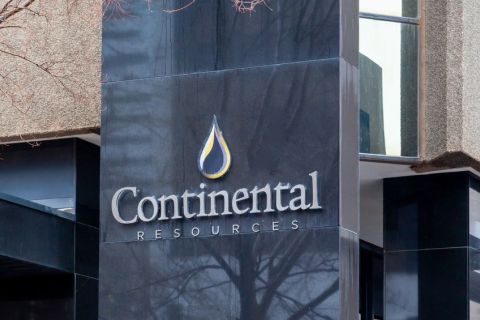
Third-quarter results inspired smiles from investors. (Source: Hart Energy)
The third quarter was a stunner for midstream companies.
“Dividend increases and buyback activity are clear signs of management teams’ confidence in their businesses,” Alerian wrote in a research note assessing the quarter. Indeed, Alerian said, this was the first quarter in two years in which no members of its midstream indexes cut their dividends, giving investors cause for optimism as 2022 approaches.
Completing projects is always a good signal to investors, and pipeline giant Enbridge Inc. brought online a slew of them in the third quarter, headlined by the $4 billion Line 3 Replacement project.
Line 3, which stretches more than 1,000 miles from Hardisty, Alberta, to Superior, Wis., can move up to 760,000 bbl/d of light and heavy crude, as well as Y-grade NGL. That shifts some of the heavy crude burden from Enbridge’s Mainline system to Line 3, Martin King wrote in an RBN Energy Inc. blog.
But Line 3 was just the biggest of Enbridge’s third-quarter project completions:
- The $500 million Southern Access expansion—from Superior to Flanagan Ill.—increased capacity by 200,000 bbl/d to 1.2 MMbbl/d;
- Upgraded compression and new natural gas pipeline segments have bumped capacity on the 1,776-mile BC pipeline system in northeast British Columbia to about 3.5 Bcf/d from 2.9 Bcf/d projects; and
- Appalachia to Market and Middlesex Extension gas projects were completed for a total of $100 million.
“The business is performing well and is generating highly predictable results,” President and CEO Al Monaco told analysts in early November. “We’re on track to put $10 billion of capital into service this year. That will generate a lot of cash flow.”
Enbridge also bought Moda Midstream LLC in a $3 billion cash deal announced in early September. The primary asset was the Moda Ingleside Energy Center (now Enbridge Ingleside Energy Center), which accounted for 25% of U.S. crude oil exports in 2020. During the analyst call, Monaco said he expected the Moda assets to provide a “modest tailwind” for the fourth quarter.
The purchase included the Viola Pipeline near Corpus Christi, Texas, and a 20% interest in the Cactus II Pipeline. East Daley Capital expects the new assets to generate about $305 million in adjusted EBIDTA for Enbridge in 2022.
There’s also room to grow. “Though Corpus Christi export capacity is significantly overbuilt, our Crude Hub Model forecasts rising demand for crude oil exports from the port and at the Ingleside terminal as Permian supply recovers through 2024,” East Daley said in a Nov. 11 research note.
‘Clear line of sight’
The Williams Cos. reported sterling results, achieving adjusted EBIDTA of $153 million, or 12% above the previous year’s third quarter. Year-to-date EBIDTA is up $383 million or 10%.
“Not only did we deliver more on our financial performance this quarter than we expected, but we continue to make strides in executing on key projects and transactions that give us a clear line of sight to sustain growth for many years to come,” President and CEO Alan Armstrong said during an earnings call in early November.
Almost all of the EBIDTA growth in the quarter can be attributed to production in the Wamsutter Field in Wyoming’s Greater Green River Basin. Williams finalized a JV with Denver-based Crowheart Energy in July in which Crowheart would operate consolidated assets owned by BP Plc and Southland.
“Our upstream operations added $55 million to adjusted EBITDA this quarter,” CFO John Chandler told analysts during the call. “This is almost entirely from the Wamsutter upstream acreage production from the combined assets, mostly from Wamsutter. It totaled 232 million CFEs a day for the quarter net to our ownership. Our upstream operations otherwise have added an additional $83 million year-to-date, almost entirely from the Wamsutter properties.”
Williams reported earnings of $0.34 per share in the third quarter, beating the consensus analyst estimate of $0.28. Revenue of $2.48 billion—up 28% over the same period in 2020—beat the analyst estimate of $2.09 billion. Williams had a net margin of 10.67% and a return on equity of 10.84%.
The NGL champ
In the third quarter, Energy Transfer LP led every country and company in the world in NGL exports with a global market share of almost 20%, double that of 18 months ago. Despite this, the company’s results slipped some from the same quarter in 2020. This was partly due to a very strong third quarter a year ago.
Consolidated adjusted EBITDA in the quarter was $2.6 billion, compared to $2.9 billion in 2020. Discounted cash flow (DCF) was $1.31 billion, compared to $1.69 billion a year ago.
In his call with analysts, co-CEO Tom Long noted that higher volumes across most segments did not offset the significant optimization gains in third-quarter 2020, as well as a onetime $103 million gain in the midstream segment. Long also pointed to higher charges for utilities and other expenses related to the winter storm in February 2021.
Energy Transfer continues to make its way through its Mariner East project obstacle course. Long said the company has commissioned the next major phase in the project, which will lift the system’s capacity to 260,000 bbl/d. Year-to-date volumes through the system and Marcus Hook, Pa., terminal are up 12% over this period a year ago.
The company awaits a permit modification to convert the final directional drill to an open cut. Following that, the last segment of Mariner East could go into service in first-quarter 2022.
But about those obstacles: In early October, Pennsylvania Attorney General Josh Shapiro filed 48 criminal charges against Energy Transfer related to Mariner East, including one felony charge of failing to report pollution. Some legislators have called for the project to be scrapped but action by the state legislature is unlikely. Gov. Tom Wolf has also rejected calls to shut down the pipeline.
Revenues of $16.66 billion were higher than the Zack’s Consensus estimate of $14.96 billion. Zack’s expected earnings of $0.26 per unit. Energy Transfer reported $0.20 per unit.
Recommended Reading
Brett: Oil M&A Outlook is Strong, Even With Bifurcation in Valuations
2024-04-18 - Valuations across major basins are experiencing a very divergent bifurcation as value rushes back toward high-quality undeveloped properties.
Ohio Oil, Appalachia Gas Plays Ripe for Consolidation
2024-04-09 - With buyers “starved” for top-tier natural gas assets, Appalachia could become a dealmaking hotspot in the coming years. Operators, analysts and investors are also closely watching what comes out of the ground in the Ohio Utica oil fairway.
Occidental to Divest Some Permian Assets after Closing CrownRock Deal
2024-02-21 - Occidental CEO Vicki Hollub said plans to divest non-core Permian assets would come after closing the pending acquisition of CrownRock — but reports have since emerged that the company is considering selling its share of Western Midstream Partners, valued at about $20 billion, according to Reuters.
Dallas Fed Energy Survey: Permian Basin Breakeven Costs Moving Up
2024-03-28 - Breakeven costs in America’s hottest oil play continue to rise, but crude producers are still making money, according to the first-quarter Dallas Fed Energy Survey. The situation is more dire for natural gas producers.
Continental Resources Makes $1B in M&A Moves—But Where?
2024-02-26 - Continental Resources added acreage in Oklahoma’s Anadarko Basin, but precisely where else it bought and sold is a little more complicated.






